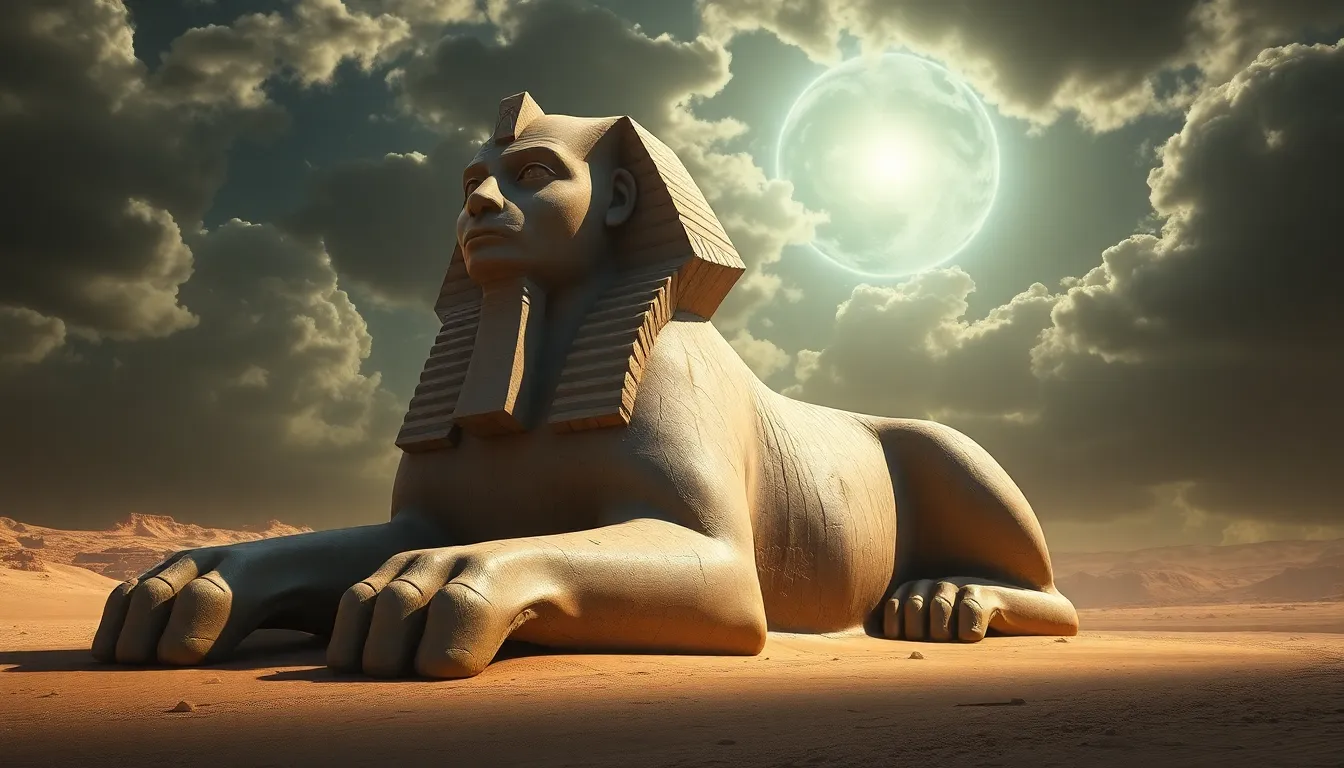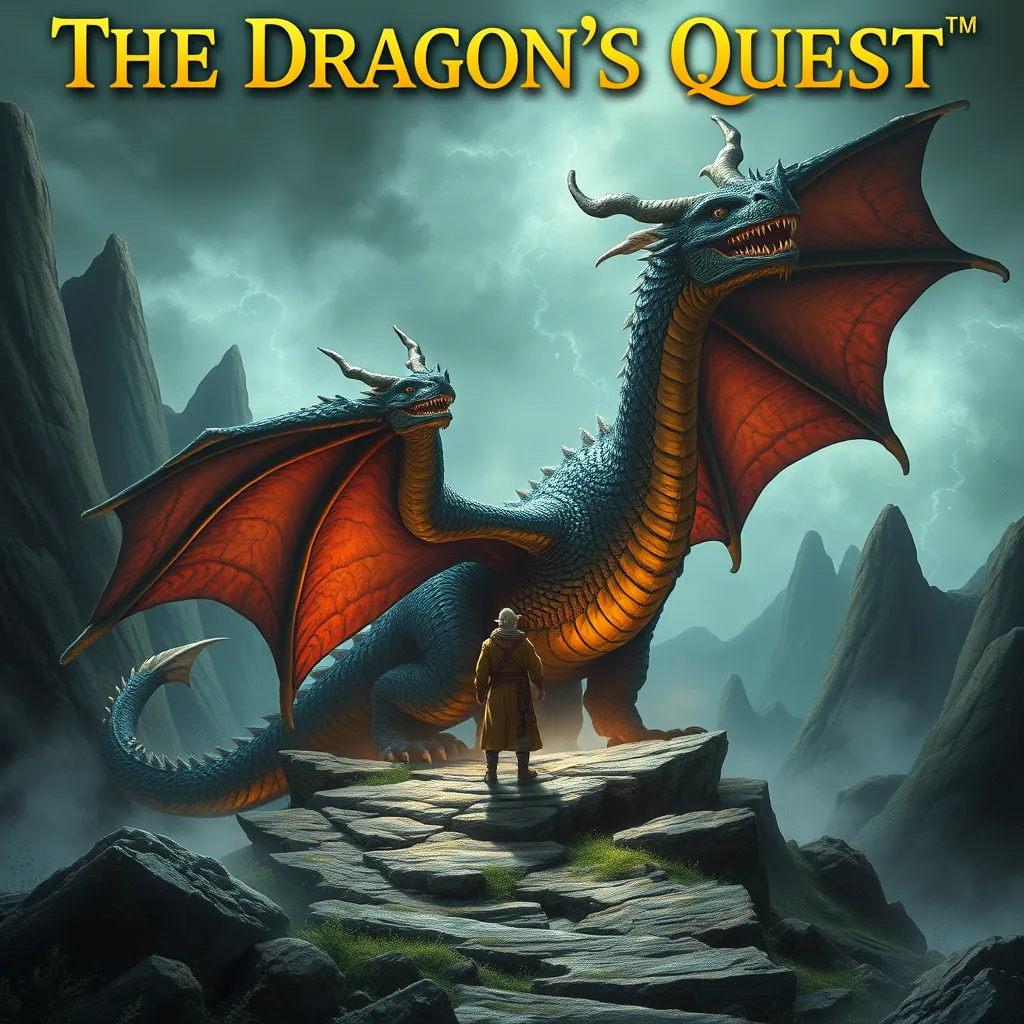The Sphinx: A Riddle-Solving Guardian of the Underworld – Exploring its Origins
Introduction: The Enigmatic Sphinx
The Sphinx is one of the most iconic mythical creatures, capturing the imagination of people for centuries. With its intriguing combination of a lion’s body and a human head, the Sphinx serves as a powerful symbol in both ancient Egyptian and Greek mythology. Throughout history, the Sphinx has been associated with mystery, wisdom, and guardianship. This article aims to explore the origins, symbolism, and cultural significance of the Sphinx across different civilizations.
Historical Context: The Sphinx in Ancient Egypt
The Great Sphinx of Giza is perhaps the most recognized representation of the Sphinx. This monumental statue measures approximately 66 feet (20 meters) high and 240 feet (73 meters) long, making it one of the largest and oldest sculptures in the world. Carved from limestone, the Sphinx was constructed during the reign of Pharaoh Khafre around 2500 BC. Its construction techniques remain a subject of fascination and debate among historians and archaeologists.
The Sphinx was not merely a statue but a significant part of ancient Egyptian society. It was believed to be a guardian of the pharaoh’s tombs, representing strength and protection. The Sphinx’s human head is thought to represent Khafre himself, symbolizing the divine connection between the pharaohs and the gods.
Numerous myths and legends surround the Sphinx in Egypt. One prevalent belief was that the Sphinx could speak and pose riddles to those who dared to approach it. This characteristic would later influence the Greek interpretation of the Sphinx, intertwining its legacy with themes of wisdom and mystery.
The Sphinx in Greek Mythology
In Greek mythology, the Sphinx takes on a different form and narrative. Known for its role in the tragic story of Oedipus, the Greek Sphinx is often depicted as a winged creature with the head of a woman. The most famous tale involves the Sphinx posing a riddle to travelers:
- What walks on four legs in the morning, two legs at noon, and three legs in the evening?
The answer, of course, is “man,” who crawls on all fours as a baby, walks on two legs in adulthood, and uses a cane in old age. Oedipus, the clever hero, successfully answers the riddle, leading to the Sphinx’s demise. In this context, the Sphinx symbolizes fate and knowledge, embodying the struggle between human intellect and the seemingly insurmountable forces of destiny.
Symbolism and Interpretation of the Sphinx
The Sphinx’s unique dual nature, combining human and animal features, has led to various interpretations. This hybrid form represents the duality of existence—combining strength and intelligence, instinct and reason. The Sphinx serves as a guardian figure, often placed at the entrances of temples and sacred spaces, symbolizing protection against malevolent forces.
Moreover, the Sphinx’s riddle acts as a metaphor for the quest for knowledge and self-discovery. It challenges individuals to confront their own understanding of life, existence, and their place in the universe. The encounter with the Sphinx can be seen as a rite of passage, forcing individuals to confront their fears and uncertainties.
Artistic Representations of the Sphinx
Throughout history, the Sphinx has been depicted in various artistic forms, reflecting its significance in different cultures. In ancient Egyptian art, the Sphinx is often portrayed in a regal manner, exuding power and authority. The Great Sphinx of Giza remains a testament to the artistic prowess of ancient Egyptian civilization.
In Greek art, representations of the Sphinx vary, often highlighting its mysterious and foreboding nature. Artists frequently depicted the creature in sculptures and pottery, emphasizing its role in the Oedipus myth. As time progressed, the imagery of the Sphinx evolved, influencing later artistic movements in the Renaissance and beyond.
Moreover, the Sphinx’s image has permeated literature and popular culture, inspiring countless works that explore themes of mystery, knowledge, and the human condition.
Archaeological Discoveries and Theories
Archaeological discoveries related to the Sphinx have unveiled critical insights into its historical context. Excavations around the Great Sphinx have uncovered remnants of temples, causeways, and other structures that suggest its significance in ancient rituals and ceremonies.
Numerous theories regarding the Sphinx’s purpose and function have emerged over the years, including the idea that it served as a solar symbol or a representation of the pharaoh’s divine power. Ongoing debates among researchers continue to shed light on the Sphinx’s origins, with some theorizing it predates the dynastic period of Egypt.
Cultural Impact and Legacy
The Sphinx’s influence extends beyond ancient times, permeating modern literature, film, and popular culture. It is often invoked as a symbol of mystery and enigma, representing the unknown and the challenges of knowledge. The Sphinx’s riddle continues to captivate audiences, sparking curiosity and prompting explorations of deeper philosophical questions.
In contemporary society, the Sphinx remains a potent symbol, appearing in various forms of media, from movies to literature. Its enduring legacy is a testament to humanity’s fascination with the unknown and the eternal quest for understanding.
Conclusion: The Enduring Mystery of the Sphinx
In conclusion, the Sphinx holds a significant place in both ancient mythology and modern interpretations. Its rich history and dual symbolism as a guardian and a riddle-solver encapsulate the timeless human journey toward knowledge and understanding. The Sphinx continues to inspire awe and intrigue, serving as a reminder of the mysteries that lie at the intersection of life, knowledge, and existence.
The allure of the Sphinx is not merely rooted in its historical context but in its ability to challenge our perceptions and invite us to explore the depths of our consciousness. As we continue to unravel the mysteries of the Sphinx, we also reflect on our own quest for knowledge and the enigma of the human experience.



